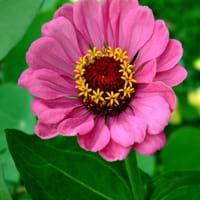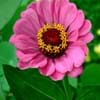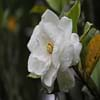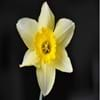Color
Pink, Purple, Red, White, Yellow
Orange, Pink, Purple, Red, Yellow
Color Meaning
Pink - Sensitivity and Love, Purple - Elegance and Pride, Red - Courage, Desire and Love, White - Purity and Innocence, Yellow - Happiness and Friendship
Orange - Satisfaction and Passion, Pink - Sensitivity and Love, Purple - Elegance and Pride, Red - Courage, Desire and Love, Yellow - Happiness and Friendship
Line
Not Available
Not Available
Silhouette
Not Available
Not Available
Blossom Texture
Not Available
Not Available
Form
Not Available
Not Available
Sunlight
Full Sun
Full Sun, Part Sun
Type of Soil
Loamy, Sandy
Sandy
Essential Fertilizers
Lime stone
Nitrogen
Common Pests and Diseases
List of Pests
Aphids, Mites, Thrips, Whiteflies
Aphids, Mites, Nematodes, Slugs, Snails, Spider Mites
List of Diseases
Alternia Leaf Spot, Bacterial leaf spot or blast, blight, Powdery Mildew
Gray Molds, Root Rot, Stem Rot
Bloom Time
All Summer Season, Fall Season
Spring Season
Origin
Mexico
China, Greece, Iran, Persia, Siberia, Turkey, Ukraine
Interesting Facts of
- Zinnia is derived from German botanist Johann Gottfried Zinn's name and is the state flower of USA(Indiana).
- Spanish call it mal de ojos which means sickness of the eye.
- Tulip is the national flower of Turkey and Afghanistan and its name is originated from Turkish word 'Turbin'.
- On Valentine's Day Tulip is the second most popular flower to send after roses.
Lifespan
Annuals - complete its full life cycle in one growing season
Annuals - complete its full life cycle in one growing season, Perennials - a plant that lives for three or more years
Uses
Not Available
Not Available
Health Benefits
Cures Constipation
Best remedy for Cough & Cold, Reduces risk of cancer, Used for sinus pain, hay fever and headache
Medicinal Uses
Acts as an Astringent, Natural Healer
Have diuretic properties, It has anti-septic properties
Culinary Uses
Salads, Teas
NA
Cosmetic Uses
Used in Perfumes, Used in shampoos and soaps
Best for Dry sensitive skin, Used in creams, hand lotions and in essential oils, Used in Perfumes
Occasional Uses
Thanksgiving Day, Wedding
Father's Day, Friendship Day, Mother's Day, Wedding
Allergy
Asthma, Contact Dermatitis, Itching
NA
Scientific Name
Zinnia Elegans
Tulipa
Sub kingdom
Tracheobionta
Tracheobionta
Super Division
Spermatophyte
Spermatophyte
Division
Magnoliophyta
Magnoliophyta
Class
Magnoliopsida
Liliopsida
Family
Asteraceae
Liliaceae
Sub Family
Asteroideae
Lilioideae
Genus
Not Available
Not Available
Number of Species
Not Available
Not Available
Zinnia and Tulip color
Zinnia and Tulip come in variety of colors. Every color tells a different story. Let’s know about Zinnia and Tulip color meaning in this section. For example Red - Courage, Desire and Love, Pink - Sensitivity and Love,Yellow - Happiness and Friendship, Orange - Satisfaction and Passion, Purple - Elegance and Pride, Blue - Peace and Serenity, White - Purity and Innocence, Green - Prosperity and Optimism. Zinnia is Dome in shape and has NA fragrance whereas Bowl shaped Tulip has Floral fragrance.
More facts about Zinnia and Tulip
You must be eager to know more facts about Zinnia and Tulip. Did you know Zinnia has originated in Mexico while Tulip has originated in China, Greece, Iran, Persia, Siberia, Turkey, Ukraine. One of the Interesting Facts about Zinnia and Tulip is that they can survive almost in pots.
Zinnia and Tulip Uses
Benefits of flowers are universally known. Let’s know about Zinnia and Tulip uses in this section. Zinnia and Tulip have many medicinal properties. Besides, Zinnia is given on special occasions like Thanksgiving Day, Wedding whereas Tulip on Father's Day, Friendship Day, Mother's Day, Wedding. Zinnia and Tulip also have many culinary benefits.
Learn about Zinnia and Tulip Family classification
Flowers classification makes their study easier. Plants sharing same association are grouped together. Let’s learn about Zinnia and Tulip Family classification here. Zinnia and Tulip belong to Plantae. They are further divided in Spermatophyte super division and Magnoliophyta division. This way, different flowers can be organized in a systematic format.





